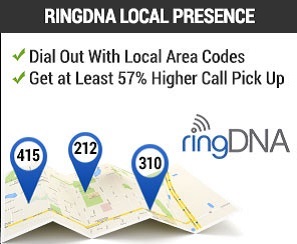Why Sales Call Connection Rates Are Dropping, and What You Can Do About It
New data from the Bridge Group reveals that while the average number of dials that sales development reps (SDRs) make has remained constant since 2007 (52 dials per day), the number of conversations that those dials yield is dipping (down to just 7 conversations per day for outbound prospectors).
Even more interestingly, the same study shows that simply dialing more prospects isn’t going to necessarily deliver conversations. The dial-to-connection ratio remains relatively constant until around 80 dials, after which there are vastly diminishing returns. For example, dialing 100 instead of 80 prospects only wins an average of one extra conversation.
Quality Conversations Over Quantity of Dials
If sales managers simply focus on how many dials their reps are making, they’re focusing on a tree and missing the forest. An SDR’s job is to connect with and qualify prospects. That being the case, metrics like dial-to-connect ratio and conversations per day by rep are vastly more important than activity metrics like dials per day. Activity metrics are important to be aware of, but only if activities are being optimized to meet your greater goal (which I assume is closing revenue). Dialing prospects is only a means to an end. What’s truly important is connecting with and qualifying leads. This can help assure that there are always a predictable number of opportunities in your pipeline.
The good news is that there are some ways to improve the number of connections reps have with prospects. Here are three ways that sales acceleration technology can help your reps spend more time connecting with and selling to prospects.
Use Dialing Software
As we mentioned, there seems to be diminishing returns after around 80 dials per day. But let’s face it, without dialing software, a lot of reps are going to struggle to even dial 50 prospects in a day. According to the Bridge Group’s data, the average outbound SDR makes 49 dials in a day without using dialing software. With software that speeds up dialing, that number goes up to 77 per day. The same data shows that this bump in dials enables reps to have an extra two conversations in a day. Our Intelligent Dialer, for example, empowers reps to power through lead lists in Salesforce with one-click dialing.
Of course, the right number of dials will depend on what it is you’re selling. In our recent Dreamforce session, expert sales trainer John Barrows mentioned that it can help to ramp up reps by having them make a high volume of calls. Then, once a rep proves that they can handle volume, they can scale back and try to find the right number of dials to ensure quality conversations.
Minimize Administrative Tasks
Most sales reps spend far too much time putting lists together, entering data in their CRM and researching prospects and not enough time actually connecting with prospects. When we built Revenue.io we wanted to help our customers minimize the time that they spend entering data in Salesforce. All calls and recordings are logged automatically. And we also help minimize research time by aggregating prospect data from a variety of sources such as Salesforce, AdWords, Twitter and more in a single view.
Dial Leads from Local Area Codes
The Bridge Group mentioned that connection rates are dropping. We think this is because prospects are simply becoming less likely to answer calls from unknown out-of-state or toll-free phone numbers. Simply dialing prospects from a number that matches their local area code, however, has been shown to lift call connection rates by at least 57%. Using the Bridge Group’s numbers that could amount to an extra 4 conversations a day. Our Local Presence solution enables sales development reps to automatically dial prospects from a number that matches their area code. This is consistently one of our customers’ favorite features, and it’s not hard to see why. At the end of the day, improving connection rates is one of the most important things that an inside sales manager can do to improve the performance of a sales development team.
